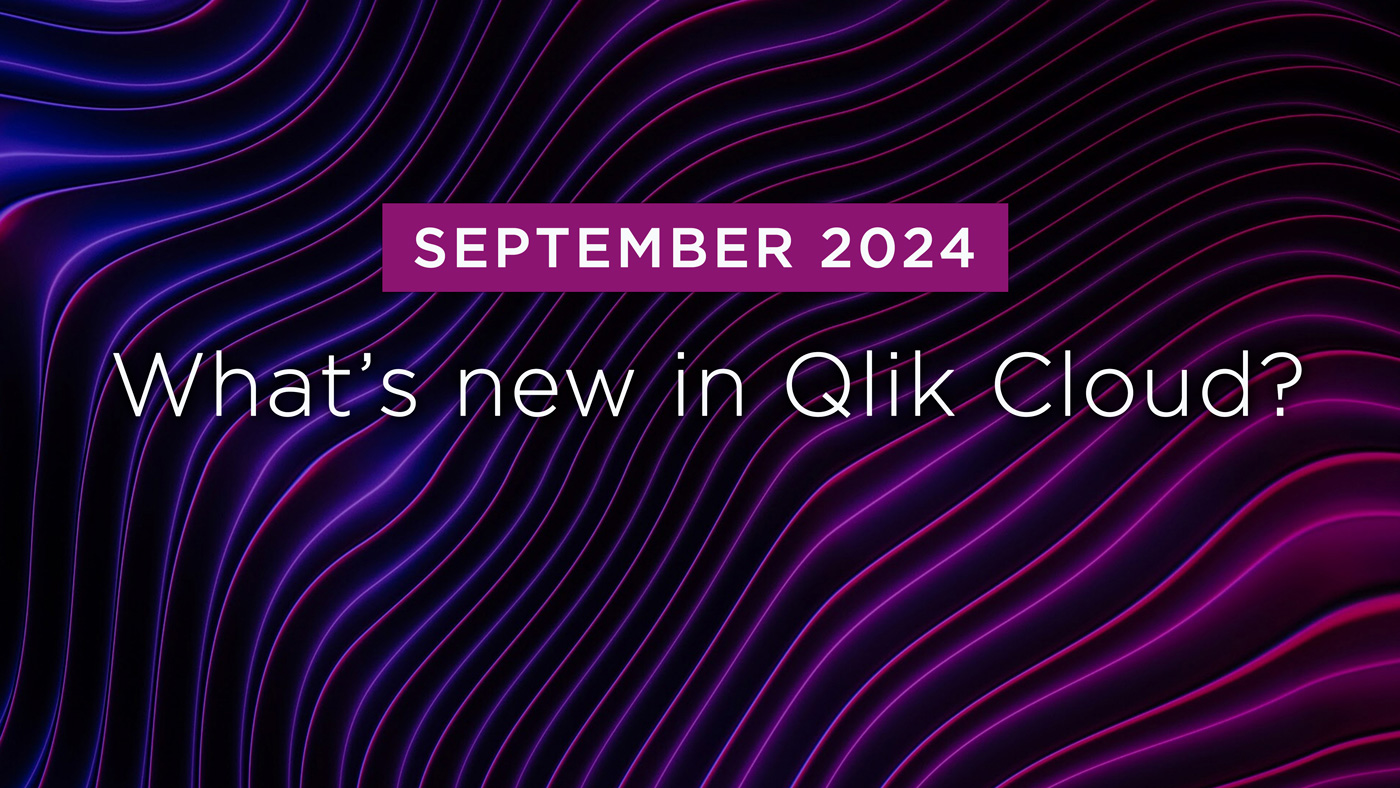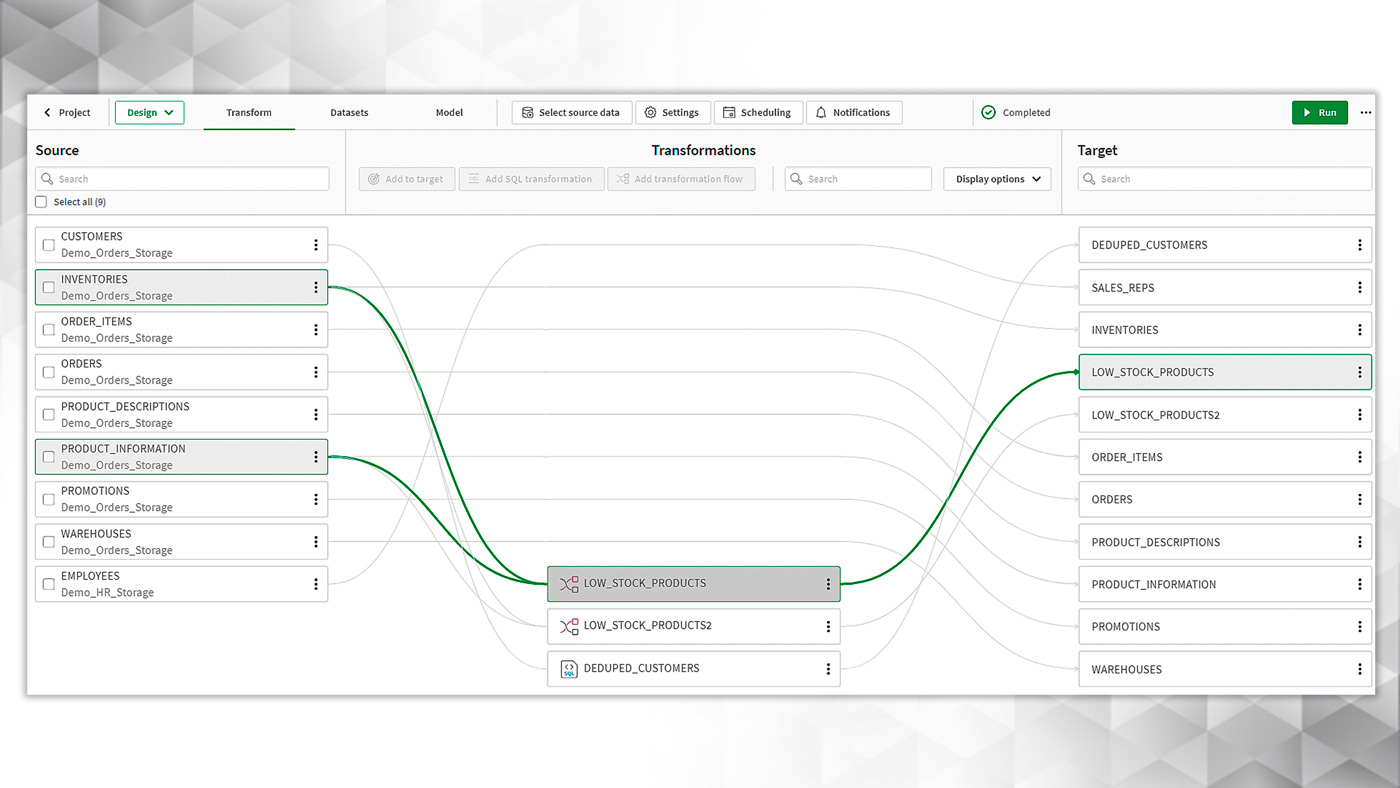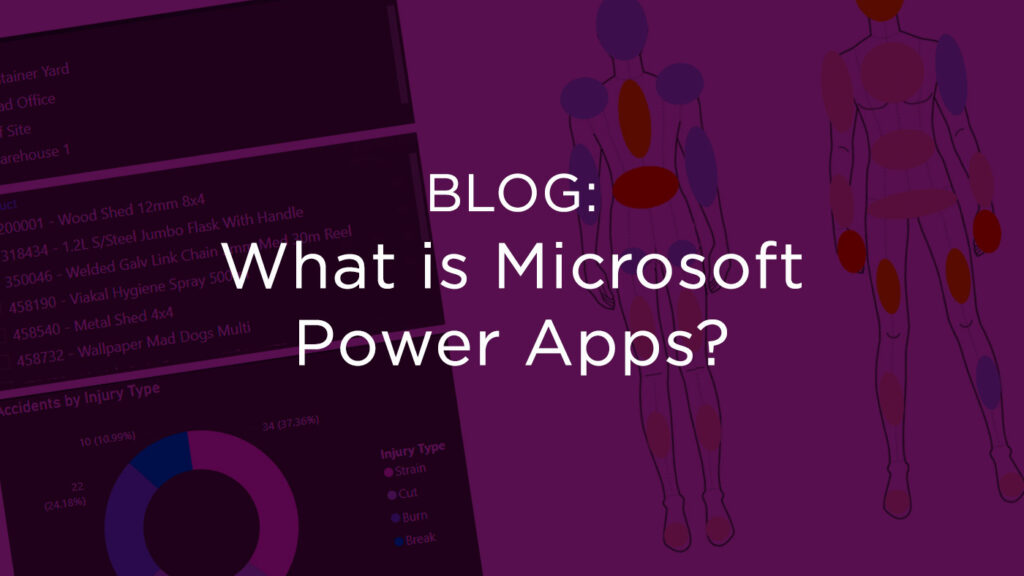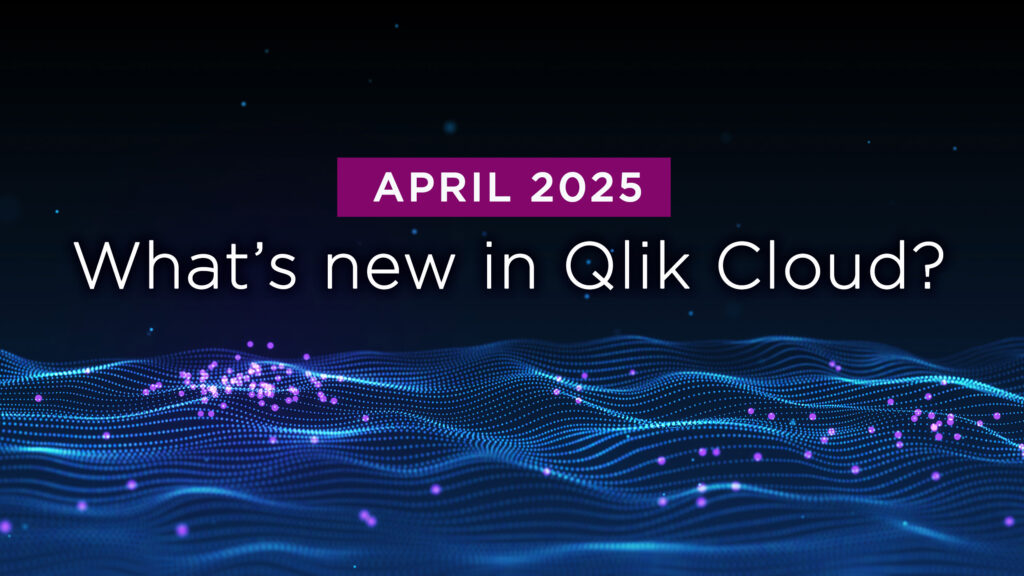
What’s New in Qlik Cloud
– September 2024 Updates –
Welcome to the next edition of the ‘What’s New in Qlik Cloud’ blog for September 2024.
Authors: Roger Gray, BI Manager & Tom Cotterill, BI Consultant, at Climber.
Data Analytics
The latest update for Qlik Cloud contains several enhancements to help drive a consistent style and user experience throughout the Qlik app, plus developments to improve usability and creation of reports.
1. Refined In-app Subscriptions with Dynamic Expressions
Subscription reports allow the scheduling of recurring emails containing sheets or charts you are subscribed to. This functionality is now extended to include the use of bookmarks allowing more dynamic expressions to be used in the report creation process. When creating and sharing subscriptions, use expression search to filter the data at report generation time based on date expressions, calculated values, and more… for more accurate reports!
2. Styling of all Charts
The remaining charts in the visualisation and dashboard now have the general styling options to set title font styles, background colour, border options, and more.
3. Tabular Reporting Template Management
The connection to a report template previously had to be made within the Qlik add-in for Microsoft Excel. This process is now optimised to allow a template to be connected to the source at the time of upload to Qlik Cloud.
4. Tabular Reporting Enhancements
Qlik Cloud tabular reporting capabilities have been enhanced to respect locale formatting for dates and numbers in PDF outputs. The enhancements ensure that your reports align with regional formatting standards, providing a more localised and user-friendly experience.
5. Enhancements to the New Straight Table
The new straight table in the Visualisation bundle has two exciting enhancements:
- Text Styling by Expression: Use tags to style text (bold, italic, underline, strikethrough) via a second expression.
- Modifiers: Transform measures into accumulations, moving averages, differences, or relative numbers with a single dropdown selection.
6. Search and Replace in Expression Editor
A small but powerful enhancement to expression editing of front-end developers. Now it is possible to search and replace expression sections as it has been possible in the script editor. This includes “replace all” allowing for bulk edits to complex expressions.
The usability of the expression editor has also been improved by adding a confirmation dialog when closing with unsaved changes.
7. Expressions in Field Labels
It is now possible to have expressions in field labels of drill-down and cyclic dimensions, allowing support for dynamic labels and multi-language support.

Data Integration
Qlik continues to push the envelope in data integration, delivering powerful updates to its Qlik Data Integration platform. These enhancements are aimed at making data processes more efficient, secure, and user-friendly, enabling organisations to handle their data needs with greater ease and reliability.
1. Table Recreation Enhancements
The latest improvements to table recreation processes in Qlik significantly reduce downtime and enhance data consistency. This is particularly valuable in environments where frequent schema changes occur, as it allows for seamless updates without disrupting ongoing operations. Now there is no need to recreate tables in the downstream task. When recreating a table, the downstream task will react as if a truncate and reload action occurred on the source datasets.
These enhancements ensure that their dashboards and reports remain up to date without downtime, supporting continuous business operations.
2. Target-based Dataset Model for Transform and Data Mart Tasks
Qlik’s new ‘target-based dataset model’ offers a more efficient approach to managing transform and data mart tasks. This model allows for the definition of datasets at the target level, providing granular control over data processing and storage.
For example, financial services firms dealing with large volumes of transaction data could use this model to streamline their data processes. Thereby they ensure only relevant data is processed, which optimises storage costs and improves query performance.
3. Re-designed View for Transform Tasks
Qlik has reimagined the interface for transform tasks, by making it more intuitive and user-friendly and providing visible linage. The new design offers a clearer view of transformation pipelines, simplifying the management of complex workflows.
Data engineers can now more easily track and manage data transformations, ensuring that data is processed correctly and that it is integrated into reporting systems without errors.

4. Enhanced Support for Metadata Changes in Replication and Lake Landing Tasks
All tables would be dropped and recreated after any metadata change, even those tables unaffected by the update. In this update, Qlik ensures that replication and lake landing tasks can adapt to changes in source data structures without requiring extensive reconfiguration. Now, after a metadata change, only the changed tables will be dropped and recreated, thereby improving performance.
5. Shared Data Space
The introduction of a shared data space feature enables teams to collaborate more effectively by securely sharing data across various parts of an organisation. This is especially important for large enterprises where data silos can impede operational efficiency.
As part of this improved experience a data space, called Default_Data_Space, is automatically created in every tenant. The owner of this new space will be the first admin to enter the tenant, and all users of the tenant will be automatically granted with the following permissions:
- Can view
- Can consume data
- Can edit
- Can manage
- Can operate
This feature is now in all editions of Qlik Talend Cloud: Starter, Standard, Premium, and Enterprise.
6. Qlik Talend Data Integration Improvements
Qlik has made substantial improvements to its integration with Talend, focusing on better compatibility and performance.
Please note: The following updates require Qlik Data Gateway – Data Movement version 2024.5.7 or later. For upgrade instructions (as well as resolved issues) please go here.
The updates include:
Automatic Loading of New Tables
New tables in source databases can now be automatically detected and included during CDC (Change Data Capture).
Microsoft SQL Server (MS-CDC) Enhancements
Improved support for Microsoft SQL Server’s Change Data Capture (MS-CDC), including the preservation of Timestamp and Transaction ID information and better handling of Transaction ID byte order. This ensures more accurate and consistent data replication.
Enhanced Timestamp and Transaction ID Preservation
Previously, when Qlik Talend Data Integration processed multiple transactions from Microsoft SQL Server’s Change Data Capture (MS-CDC), only the first transaction’s ID and timestamp were preserved. This resulted in all records appearing as part of a single transaction on the target system. The latest update now ensures that each record retains its original transaction ID and timestamp. This improvement is particularly beneficial for users who rely on the Transaction ID and Timestamp header columns in change tables for precise tracking and analysis.
Corrected Transaction ID Byte Order
In earlier versions, transaction IDs were encoded with their bytes in reverse order, potentially leading to confusion or errors during data replication. The latest update corrects this, ensuring transaction IDs are now encoded in the correct byte order. However, for customers who prefer to maintain the previous behaviour, Qlik has provided internal parameters to allow this configuration. For guidance on adjusting these settings, customers should contact Qlik Support.
Support for SHA-2 Pluggable Authentication in MySQL
Qlik now supports caching SHA-2 pluggable authentication in MySQL, providing a higher level of security by using a more secure hashing algorithm for authentication.
Amazon Redshift Data Type Mapping Changes
Updates to data type mapping for Amazon Redshift improve compatibility and efficiency in data integration, especially for complex ETL processes.
Previously BYTES and BLOB datatypes were mapped to VARCHAR, these will now be mapped to VARBYTE.
For enterprises using Talend for complex ETL processes, the improvements listed above enable more seamless integration with Qlik, enhancing data flow efficiency and reducing the need for custom solutions.
7. Newly Certified Platforms, Endpoints, and Versions
Qlik has also expanded its compatibility with newly certified platforms and endpoints. This ensures that users can leverage the latest technologies without compatibility issues, keeping their data environments up to date and fully functional.
Data Sources:
- PostgreSQL 16.x
- MySQL 8.1
- IBM DB2 for z/OS 3.1
Target Platforms:
- PostgreSQL 16.x
- MySQL 8.1
- Databricks 14.3 LTS
Drivers:
- SQL Server ODBC Driver 18.3

Summary
These updates underscore Qlik’s commitment to providing innovative tools that address the evolving needs of data professionals. By enhancing key features and ensuring broader compatibility, Qlik empowers organisations to manage complex data landscapes more efficiently, securely, and effectively.
SUBSCRIBE
Want to stay up to date with the latest features that are released in Qlik Cloud?
Subscribe to our blog and get monthly updates directly to your inbox.
WANT TO KNOW MORE? CONTACT US!
Roger Gray
BI Manager
roger.gray@climberbi.co.uk
+44 203 858 0668
Tom Cotterill
Senior BI Consultant
tom.cotterill@climberbi.co.uk
+44 203 858 0668
News archive

What is Microsoft Power Apps?
Microsoft Power Apps is a low-code platform that enables businesses to swiftly develop custom applications tailored to their unique needs, without requiring extensive coding knowledge. In this blog you will learn more about the components, use cases, and benefits for your business.
>> Read more
What’s New in Qlik Cloud – Apr 2025
Qlik continues to roll out a comprehensive set of updates across the platform – from workflow automation, machine learning improvements, charting enhancements, new scripting tools, and expanded global coverage.
>> Read more
Optimising Workforce Management for Virgin Wines through custom Microsoft Power Apps
Read how we transformed operations for Virgin Wines, significantly improving their ability to forecast and allocate resources effectively.
>> Read more!
